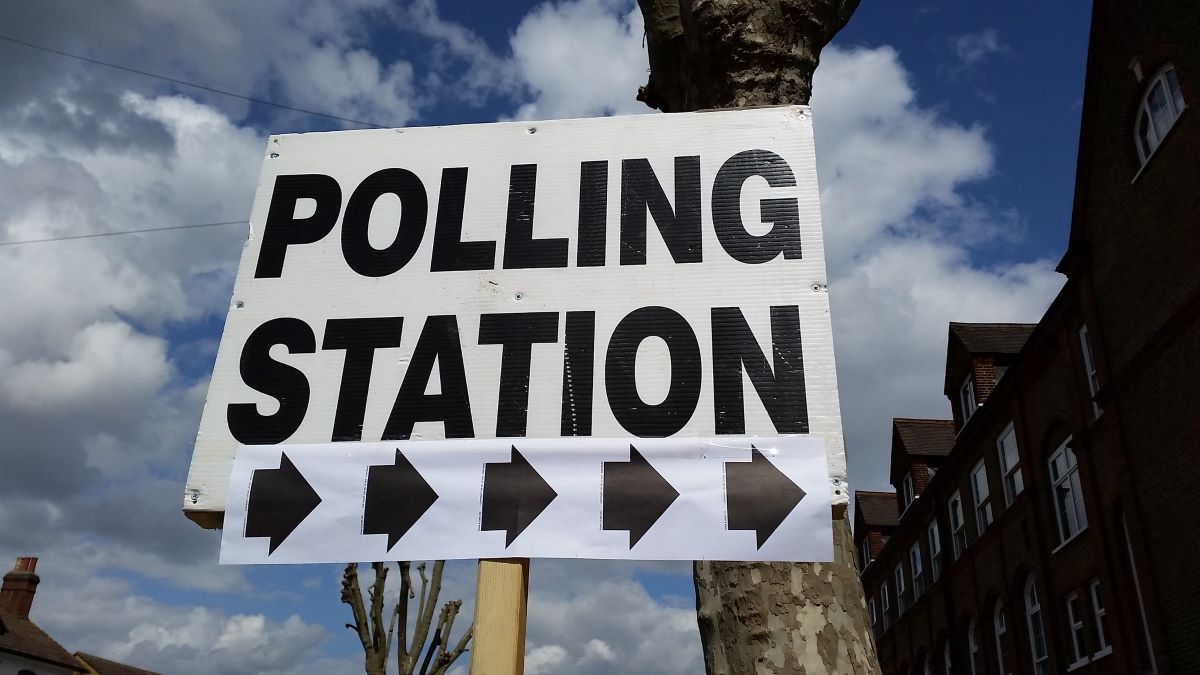Why Strange Clots Form After mRNA Jabs, Treatments to Consider
In our previous article, we provided an overview of COVID-19-related abnormal blood clots. This article will look at the white or brownish fibrous clots found in vaccinated individuals—how these clots form, and potential treatments.
Abnormal Fibrous Blood Clots Reported Worldwide
By mid-2021, embalmers worldwide pulled from dead bodies odd, white or brown fibrous clots. The embalmers reported that they had never before seen such matter.
An embalmer is a highly trained professional with a specialized skill set, who works in a funeral home, laboratory, or research facility; he or she is responsible for preparing the bodies of the deceased for funeral services.
Their daily work is to replace blood with embalming fluid in the blood vessels. Since the middle of 2021, an increasing number of embalmers have been talking about their inability to replace blood with embalming fluid in some dead bodies.
Seeking to discover the cause of this, the embalmers we interviewed and those featured in a video series on the topic looked for what was blocking the veins and arteries.
Richard Hirschman, a board-certified embalmer and funeral director in Alabama with more than 20 years of experience, recorded the process of removing clots from the arteries of dead bodies. Hirschman commented, “Normally, we don’t see clots in the iliac. Usually, they’re in veins…This is not normal.”
John O’Looney, the owner and director of the funeral home Milton Keynes Family Funeral Services, located outside Northampton in the United Kingdom, documented fibrous, rubbery, and firm blockages removed from the blood vessels of a young man who died suddenly. The blockages took the shape of blood vessels.
Anna Foster, an embalmer with 11 years of experience in Carrollton, Missouri, began seeing fibrous-looking clots in early summer 2021. She had never before in her career seen such clots.
Two of Foster’s close friends, also embalmers, had seen the same odd blood clots.An anonymous embalmer shared samples of rubber-like white, fibrous clots in an interview with Dr. Jane Ruby.
Distinctive Fibrous Clots Caused by Vaccine
The “clots” featured in these interviews with embalmers do not look like normal blood clots. They present the following distinctive features:
- Color. They are often white or brown, while normal blood clots are very dark red to black.
- Size and shape. They are string-like shapes a few inches to several feet long. Traditional blood clots are generally irregular, flat, and clump-like.
- Nature. They are rubbery and firm, while traditional blood clots are usually soft.
- Location. They are in veins and arteries, while traditional blood clots are typically found in veins.
Embalmers found normal dark clots in COVID victims long before vaccinations were available.
If COVID caused these strange fibrous clots, someone would have spotted them before 2021, but nothing of the sort was reported in 2020.
Numerous embalmers have stated that they began to see these clots in 2021, coinciding with the vaccine rollout—not in 2020, which coincided with the beginning of the pandemic—giving us some insight into the origin of these fibrous clots.
As of January 2022, Omicron had taken over as the dominant COVID variant across the United States. Omicron infection is associated with a much lower mortality rate than COVID-19. Therefore, if these unusual clots were COVID-19-related, the instances of finding them should have lessened in January 2022.
However, based on embalmers’ reports, the rates of these strange clots increased in 2022.
In an interview with Steve Kirsch, Richard Hirschman reported that in January 2022, 37 out of 57 (65 percent of his cases) had these suspicious clots.
According to these analyses, the causal role of COVID vaccination in forming these abnormal clots is very likely.
What are the main differences between the natural infection-derived clots and the vaccination-associated clots if spike protein contributes to both types?
A couple of crucial research findings help us understand.
1. Spike Protein Alone Can Form Clots in Plasma
Thrombin is an essential protein that forms typical blood clots. Thrombin clots blood by activating platelets and chopping up a protein called fibrinogen to form fibrin, a blood clot component.
However, people may not be aware that spike protein alone can form blood clots even without normal blood clot components.
A study has reported the function of spike protein in forming fibrous blood clots.
If we compare graphs B and D, as long as spike protein was added to platelet-poor plasma (PPP), with (graph D) or without (graph B) thrombin, a similar significant increase in dense anomalous clotted deposits was noted.
When healthy PPP was exposed to spike protein only, there was a considerable increase in anomalous clots (graph B).
This is of particular interest as it demonstrates that spike protein alone, even without thrombin, can form fibrous-like clots.
(A) PPP smear. (B) PPP with spike protein. (C) PPP with thrombin to create extensive fibrin clots. (D) PPP exposed to spike protein followed by the addition of thrombin. The final spike protein concentration was 1 ng.ml−1.
(Image from Grobbelaar LM, Venter C, Vlok M, Ngoepe M, Laubscher GJ, Lourens PJ, Steenkamp J, Kell DB, Pretorius E. SARS-CoV-2 spike protein S1 induces fibrin(ogen) resistant to fibrinolysis: implications for microclot formation in COVID-19. Biosci Rep. 2021 Aug 27;41(8):BSR20210611. doi: 10.1042/BSR20210611. )
2. Spike Protein Has Amyloidogenic Structure and Binds With Amyloid Proteins
Based on the analysis conducted by Mike Adams, journalist and science lab director, of clots supplied by Richard Hirschman, these strange white or brownish clots are not typical blood clots. In fact, they are primarily amyloid proteins.
Spike proteins can form beta-amyloid or alpha-synuclein-like substances, which are associated with Alzheimer’s and Parkinson’s disease.
Spike proteins present seven amyloidogenic sequences and can form amyloid-like substances.
Their structures make it easy to form tighter string-like bonded structures with longitudinal twisting as well as cross-binding, forming a fibrous-like structure.
An analogy of this process is making hemp rope: short and slim hemp fibers can be rolled into long, strong ropes with high force resistance.

The 42 amino acid form of amyloid-beta (Aβ1–42) was found to bind with high affinity to the S1 subunit of spike protein and ACE2 receptors.
Data from a mouse model with IV inoculation of Aβ1–42 showed that the clearance of Aβ1–42 in the blood was lessened in the presence of the extracellular domain of the S protein trimers.
Using an analogy to explain this phenomenon—that the spike protein alone could form amyloid aggregates and combine with other amyloids—it’s similar to a little seed crystal dropped into a solution: a large crystal will grow bigger and bigger over time.
So it’s no surprise to see a lengthy fibrous clot structure forming after COVID vaccination.
Those lengthy clots were reported mainly after mid-2021, about six months after the vaccines became widely available.
Researchers have asserted that via its prion-like properties, spike protein contributes to not only clotting disorders within the vasculature but also neuroinflammation and neurodegenerative diseases and that “these prion-like characteristics are more relevant to vaccine-related mRNA-induced spike proteins than natural infection with SARS-CoV-2.”
3. Spike Proteins Originated From the Vaccine Are More Stable Than Virus’ Spike
The spike produced by the COVID vaccine is not the same as the virus’ natural spike.
The natural spike protein from SARS-CoV-2 is unstable and easier to degrade, which is one reason that the COVID natural infection itself may not have generated excessive stable spike protein or many unusual blood clots before the vaccine rollout.
The natural spike instability was initially a critical bottleneck for the vaccine’s development.
Accordingly, scientists modified the natural spike protein’s structure to result in a more stabilized form of the spike after mRNA vaccination; the goal was to achieve a higher level of antibodies.
Pharmaceutical companies achieved this by inserting a special type of amino acid—proline (P)—in unusual positions based on a patented technology. All of these vaccines, including Moderna, Pfizer, Janssen-Johnson & Johnson, Novavax, and CureVac (Germany), contain such proline insertions.
After this proline insertion, the higher amount of pre-fusion-stabilized spike proteins in vaccinated persons—versus the amount in naturally infected people—helps explain the lengthy clots in vaccinated people.
Regardless of the risks in the production of unusual clots, vaccine designers have recently changed their design in the lab by introducing six, rather than two, prolines into the spike-protein-based vaccine. The motive is to design more potent vaccines that generate more antibodies.
4. Amount of Spike Protein in Vaccinated People Is Confirmed to Be Higher Than Natural Infection
Following mRNA vaccination, the mRNA vaccine’s endogenously produced S protein concentration is much higher than in natural infection.
Circulating S1 subunits were detected in most COVID-19 patients, possibly as a result of viral antigen leakage into the blood in subjects with severe disease.
In a COVID mRNA vaccine bioavailability study, the circulating S1 subunit of spike protein rose one day after the first dose of mRNA-1273.
People with COVID vaccine-induced bleeding disorders tend to have even more spike protein than those vaccinated people without adverse events (AEs).
For example, in an mRNA-1273 vaccine-induced thrombocytopenia case, plasma S protein levels were almost 100 times higher than those vaccinated subjects without adverse effects.
Researchers found that IV-injected radioiodinated S1 (I-S1) readily crossed the blood-brain barrier in male mice and was taken up by the brain; I-S1 was widely distributed in the lung, spleen, kidney, and liver. In a 3D blood-brain barrier model, S1 disrupted the blood-brain barrier integrity.
Researchers have hypothesized that excessive vaccine-induced production of S protein, in turn attaining concentrations high enough to bind targets such as ACE2, eventually results in AEs related to vaccine toxicity.
Only some vaccinated people have AEs. But those vaccinated who have experienced AEs are likely to have a higher level of spike proteins in their body, dependent on genetic and epigenetic predisposition factors, including lifestyle.
Notably, in a natural infection, a higher serum level of S1 is associated with higher admission rates into intensive care units and shorter time to intubation.
5. Virus Weakened but Vaccines Still Based on Original Virus’ Spike
Current Omicron strains have much-weakened toxicity, as the spike protein in Omicron has mutated and does not have all the abilities of clotting or dysregulating immune response. However, the COVID vaccines are still made based on the original Wuhan strain and are causing many clotting problems.
Most of the virus-derived S protein likely remains in the respiratory tract. In contrast, vaccine-induced S protein production occurs in internal organs and tissues (thus exerting systemic effects).
6. Spike Protein’s Key Role in the Blood Clotting Cascade
Normal blood clots can occur in vaccinated people. But spike protein can trigger the clotting cascade via inducing endothelial disruption, inflammation of endothelial cells, “life-threatening thrombotic complications,” hyperactivating platelets via multiple receptors (ACE2, TMPRSS2, or fibronectin receptor), fibrous network from neutrophil extracellular traps (NETs), as well as increasing angiotensin II level, activating Toll-like receptor 4, and increasing coagulation factor (FXa) production, all adding up to activate blood clotting “cascades.”
Spike protein causes damage to the endothelial layers of the blood vessels, then a clotting cascade follows, and then fibrin forms.

Meanwhile, spike protein disrupts the clot-dissolving mechanisms, forming an amyloid-like substance.

Monitor Blood Clot-Related Adverse Events After mRNA Jab
The JAMA Network analyzed the US Kaiser Permanente Vaccine Study Center surveillance data on 6.2 million people (mean age, 49 years; 54 percent female individuals) who received 11.8 million doses of an mRNA vaccine (57 percent BNT162b2; 6.17 million first doses and 5.67 million second doses).
A total of 23 serious adverse events have been analyzed; ten (a surprisingly high rate) were related to blood clotting issues or vascular events, including acute myocardial infarction, pulmonary embolism, cerebral venous sinus thrombosis, thrombosis with thrombocytopenia syndrome, and stroke.
Table 1: Serious Adverse Events Reported After mRNA Vaccines by JAMA
| Number | Serious Adverse Events | 1-21 days after vaccination
(Events/million person-years) |
22-42 days after vaccination
(Events/million person-years) |
| 1 | Ischemic stroke | 1612 | 1781 |
| 2 | Acute myocardial infarction | 935 | 1030 |
| 3 | Venous thromboembolism | 952 | 896 |
| 4 | Pulmonary embolism | 763 | 795 |
| 5 | Hemorrhagic stroke | 365 | 408 |
| 6 | Thrombosis with thrombocytopenia syndrome | 112 | 145 |
| 7 | Cerebral venous sinus thrombosis | 11 | 8 |
| 8 | Thrombotic thrombocytopenic purpura | 9 | 5.5 |
| 9 | DIC (Disseminated intravascular coagulation) | 45 | 69 |
| 10 | Immune thrombocytopenia | 73 | 63 |
| 11,12 | Myocarditis/pericarditis | 132 | 107 |
| 13 | Appendicitis | 1179 | 1345 |
| 14 | Gullain-Barre syndrome | 15 | 16 |
| 15 | Kawasaki disease | 0 | 5.5 |
| 16 | Bell palsy | 822 | 825 |
| 17, 18 | Convulsions / seizures | 431 | 411 |
| 19, 20, 21 | Encephalitis/myelitis/encephalomyelitis | 26 | 14 |
| 22 | Transverse myelitis | 3 | 3 |
(Source: Klein NP, Lewis N, Goddard K, et al. Surveillance for Adverse Events After COVID-19 mRNA Vaccination. JAMA. 2021;326(14):1390–1399. doi:10.1001/jama.2021.15072)
Treatment Strategies for Vaccine-Induced Unusual Clots
It has been reported that “suitable and closely monitored ‘triple’ anticoagulant therapy leads to the removal of the microclots.” “Triple” anticoagulant therapy normally includes an oral anticoagulant plus two drugs designed to decrease platelet activation.
Anticoagulants are one of two (along with antiplatelet) classes of antithrombotic drugs, also called blood thinning drugs or blood thinners. Anticoagulants act on the clotting cascade and keep it from completion.
However, a UK-wide trial found that a drug used to reduce the risk of blood clots does not help patients recovering from moderate or severe COVID-19.
Because of the difference in the components of vaccine-induced clots versus normal blood clots, blood-thinning drugs may not work in vaccinated people.
If the spike-formed amyloid substances are the main component of the fibrous clots, in addition to an autophagy-boosting strategy to remove as much as possible of the spike protein, an exploration of the potential therapies or compounds with anti-amyloid effects may be considered to help reduce abnormal blood clots after vaccination.
1. Targeted Therapies
Insights could be gained from the treatment of amyloidosis, including the use of monoclonal antibodies.
A monoclonal antibody is a type of targeted therapy. It recognizes and attaches to a specific protein. A monoclonal antibody could be designed to target the amyloid directly.
2. Nutraceuticals Effective in Reducing Amyloid
Amyloid is a type of misfolded protein, and it is this misfolding that shapes lengthy fibers. If we can correct the protein misfolding process, that could inhibit the development of long fibers.
Natural compounds may emerge as promising, new therapeutic approaches to intervening in protein-misfolding processes.
The polyphenol epi-gallocatechine-3-gallate (EGCG), the primary polyphenol in tea, binds directly to many proteins involved in protein misfolding diseases and inhibits the process of forming fibrils.
EGCG promotes the formation of stable, spherical aggregates, which are not toxic to living cells.
Derivatives of orcein, a phenoxazine dye that can be isolated from the lichen Roccella tinctoria, form a second promising class of natural compounds. They accelerate the fibril formation of the Alzheimer’s disease-related amyloid-beta peptide.
The following compounds reduce amyloid-related burdens in animal models. They may help reduce COVID vaccine-caused formation of amyloid-like fibrous clots.
Curcumin reduced amyloid levels in the brains of mice with Alzheimer’s disease. Ferulic acid, myricetin, nordihydroguaiaretic acid, and resveratrol have had similar effects in animal models.
Please speak with your physician before exploring the potential benefits of any of the above-mentioned potential therapies.
3. Meditation May Reduce Amyloid
A study published in Translational Psychiatry in 2016 followed 64 healthy women, half of whom were given a vacation, while the other half meditated.
After one week, researchers found that the meditators had significantly lower serum levels of Aβ40 (a 40-amino-acid proteolytic product from the amyloid precursor protein), which implies the potential effects of meditation in reducing amyloid-like substances.
Summary
Research on COVID vaccines is mostly limited to serological analysis—antibodies produced after injection.
However, beyond the analysis of immune responses, understanding the safety profile of those vaccines in humans is mandatory to ensure their safety, maintain a trusted health system, and protect public safety.
Multiple lines of preclinical evidence and clinical observations as a whole support a causal link between the spike protein-based COVID-19 vaccine and reported abnormal white or brown fibrous clots.
These abnormal clots block the blood vessels and cause significant clinical outcomes, including heart attack, stroke, and pulmonary embolism, which could contribute to the reported sudden death cases in vaccinated people.
There are still unknowns in the pathogenesis of these clots. However, avoiding the vaccine and promoting autophagy to clear the toxic protein from our bodies is certainly the top priority.
It is recommended to carefully monitor post-vaccination symptoms as they indicate potentially existing blood clots. Always consult your physician whenever you feel ill.
CORRECTION: An earlier version of this article identified Steve Kirsch with the wrong title. The Epoch Times regrets the error.
Views expressed in this article are the opinions of the author and do not necessarily reflect the views of The Epoch Times. Epoch Health welcomes professional discussion and friendly debate. To submit an opinion piece, please follow these guidelines and submit through our form here.
" Conservative News Daily does not always share or support the views and opinions expressed here; they are just those of the writer."








